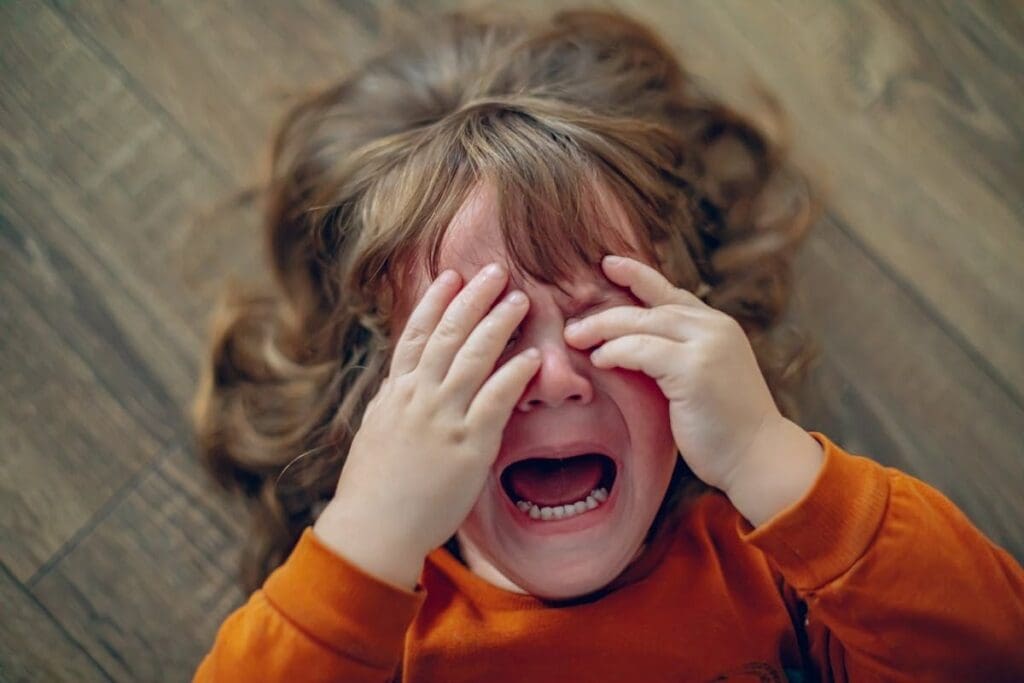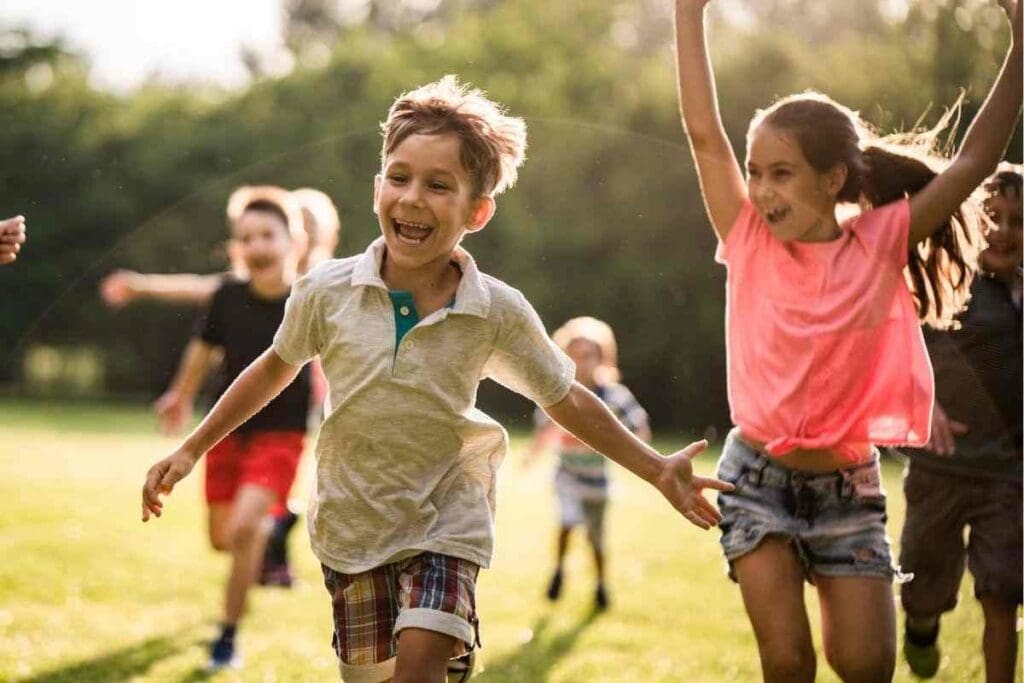Last Updated on November 20, 2025 by

Millions of children worldwide face developmental delays, making it hard for them to hit important milestones. As a top healthcare provider, we know how key it is to spot and act on these issues early. This helps kids overcome their challenges.
There are several overlapping developmental domains, often categorized as cognitive (including learning/intellectual), speech and language, motor (gross & fine), social‑emotional (including behaviour & social skills), and sometimes adaptive/self‑help skills. “Global developmental delay (GDD)” refers to when a child is significantly delayed in multiple domains. Knowing about these domains is key to helping kids grow and improve. By learning about the different domains of developmental delay, parents and caregivers can support their children. A developmental delay can be categorized into four main types. This essential guide explains each critical area and its most important signs.
It’s key to understand developmental delays early on. These delays happen when kids don’t hit milestones on time. They can affect many areas of a child’s growth.

Developmental delays mean kids are behind in physical, mental, emotional, language, or adaptive growth. A recent meta‑analysis found a pooled prevalence of confirmed developmental delay in low‑ and middle‑income countries of about 18.8%
Global prevalence estimates vary depending on how delay or disability is defined, but ~8‑10% children under 5 are affected when using narrower measures of developmental disability.
Developmental delays can really slow down a child’s growth. They can mess up a child’s learning, social skills, and feelings for a long time.
Cognitive developmental delays can make it hard for kids to learn and solve problems. Motor developmental delays can mess with their coordination and daily tasks. Knowing this helps us create better support plans.
Spotting and acting on delays early is very important. It helps kids get the help they need to do well and succeed.
Cognitive developmental delays have a big impact on learning and solving problems. They affect a child’s brain skills, like memory and understanding. It’s important to spot and help with these delays early.
Spotting cognitive delays early is key to helping a child. Look out for:
These signs can show up in different ways and affect a child’s life. Early detection is key to providing timely support.
Cognitive delays can come from many things, like:
Knowing why a child has a cognitive delay helps plan the best help. Each child’s needs are unique, so a detailed check is needed to find the right help.

Checking for cognitive delays involves:
Helping strategies might include:
Early intervention programs that provide tailored educational and therapeutic support. These programs are designed to meet the individual needs of the child, improving their cognitive and adaptive abilities.
We stress the need for teamwork. Parents, teachers, and doctors should work together. This creates a supportive space for a child to grow and develop.
Effective communication is key to a child’s growth. Delays in speech and language can lead to big problems. These delays make it hard for kids to talk and understand others.
Children with these delays might struggle with understanding or speaking. Receptive language issues mean they find it hard to understand what others say. Expressive language issues make it tough for them to share their thoughts or needs.
It’s important to know the difference. This helps us find the right ways to help. We’ll work with speech-language pathologists to figure out what each child needs.
Spotting early warning signs is key. Look out for these signs:
Speech therapy is a great way to help. Speech-language pathologists use many methods to boost communication skills. They work on:
We suggest working together on speech therapy. This includes parents, caregivers, and teachers. It helps keep support consistent.
Motor developmental delays can really affect a child’s ability to do physical tasks. They can struggle with both fine and gross motor skills. This can show up in many ways, like trouble with coordination and balance, or problems with making precise movements.
Motor skills are split into fine and gross. Fine motor skills use small muscles, such as those in the hands and fingers. These skills help with writing, using scissors, and getting dressed. Gross motor skills use bigger muscles and help with running, jumping, and staying balanced.
It’s key to know the difference between these skills to spot delays and find the right help.
Children usually hit certain motor milestones by certain ages. For example, many children walk alone by 12–18 months, and many can use utensils or dress themselves with assistance by age 3. Red flags for delays include when a child keeps having trouble with tasks they should be able to do by a certain age.
Getting help early is very important for motor delays. Physical therapy helps with gross motor skills, making it easier for kids to move and play. Occupational therapy works on fine motor skills and daily tasks, helping kids become more independent.
These therapies are made just for each child. They aim to improve physical abilities and help with overall growth.
It’s important to understand social-emotional developmental delays. These delays affect how children interact and manage their feelings. This area of development is key to their growth and happiness.
Children with these delays may show certain signs. They might have persistent tantrums or find it hard to understand emotional cues. They also struggle to make and keep healthy relationships with others.
Some common signs include:
Emotional signs might be:
Social-emotional delays often go hand in hand with other delays. This includes cognitive or speech and language delays. It’s important to understand these connections to offer the right support.
For example, a child with a cognitive developmental delay might also face social-emotional challenges. This is because they might find it hard to understand and process information.
Supporting families is key to helping children with social-emotional delays. This means working with families to understand their needs. Then, they create plans that fit their child’s unique situation.
Some good strategies include:
By focusing on family-centered support and teaming up with healthcare experts, families can help their children. This way, they can overcome social-emotional developmental delays.
It’s important to know the risk factors for developmental delays early on. These factors include genetics, environment, and socio-economic status. They all play a role in how a child develops.
Several things can increase a child’s chance of developmental delays. These include:
The Centers for Disease Control and Prevention (CDC) says, “Some risk factors, like family history and premature birth, can’t be prevented. But knowing them helps in early detection and action.”
Diagnosing developmental delays involves several steps:
Global developmental delay (GDD) is when children have big delays in many areas. This includes thinking, moving, and talking skills. GDD needs a detailed check-up and a special plan to help the child.
Starting early help is key to managing developmental delays. Knowing the risks and using a detailed check-up process helps us support children and their families better.
Early intervention is key for kids with developmental delays. This includes global developmental delay. Studies show that therapy before the age 3‑4 provides better outcomes.
Developmental delays can affect many domains. This includes speech, motor skills, social skills, and adaptive/self‑help. Early support and therapy can greatly improve a child’s growth.
Early detection and intervention are vital. They help kids reach their full abilities. Identifying risks and diagnosing early allows for targeted help.
By focusing on early intervention, we can change a child’s life. We support them in reaching their goals and improving their quality of life.
There are multiple domains of developmental delay, not exactly four fixed categories. These include cognitive/intellectual, speech and language, motor, social‑emotional, and adaptive/self‑help. Knowing these categories helps in supporting children properly.
Global developmental delay is when a child lags significantly in multiple developmental domains. This includes cognitive, motor, language skills. It’s often diagnosed in early childhood when measuring delay across domains.
Cognitive delays can make learning hard for a child. They might find it tough to understand and solve problems. This can affect their school work and daily life.
Signs include trouble speaking clearly and understanding language. Children might also struggle to express their thoughts and needs. Look for not babbling or trying to communicate by 12 months, and not combining words by 24 months, etc.
Motor delays are checked by looking at fine and gross motor skills. Doctors watch for milestones and red flags. This includes trouble walking or holding objects.
Several factors can increase the risk of developmental delays. These include genetic issues, exposure to toxins, certain medical conditions, premature birth, low birth weight, poor nutrition, and socio‑economic factors.
Early intervention is key because it offers support and therapy early on. This can greatly improve a child’s developmental outcome. Interventions before age 3‑4 show more benefit.
There are many therapies for developmental delays. Speech therapy helps with language and communication. Physical therapy focuses on gross motor skills. Occupational therapy works on fine motor skills and daily tasks. Family-centered support strategies help with social-emotional development.
Parents can support their child by working with healthcare professionals. They should develop a support plan and engage in therapies. Creating a nurturing environment that encourages learning and physical, emotional, social, and adaptive skills is also important.
Subscribe to our e-newsletter to stay informed about the latest innovations in the world of health and exclusive offers!